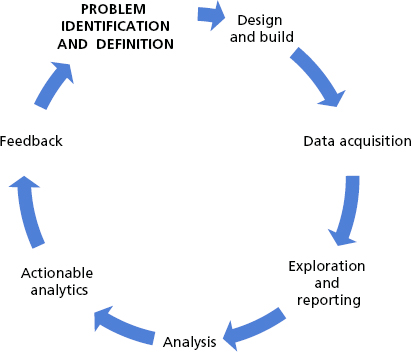Chapter 1Problem Identification and Definition
How executives focus resources and assess an organization’s readiness for meeting the challenges posed by new business realities

Recently I met with a pair of business executives at the Gaylord Convention Center near Washington, DC.
Two analysts glided their way toward me. I smiled and went in for handshakes, exclaiming “Hello there!” Their names were Zizi and Javier. Both worked for a big corporation right outside of the Beltway in Maryland. I quickly launched into a flurry of business jargon, briskly walking toward the coffee kiosk, mouth running at a hundred million miles per minute. The executives shuffled after me, saying “We are very interested in finding out more about developing a modern analytical system.”
I bought a soy latte with an extra espresso shot. As the caffeine kicked in, I started by asking, “What is your firm’s level of analytical maturity?”
Javier looked at me and said, “Before we get started, do we have an NDA in place?” A nondisclosure agreement is a document signed to protect both parties. (A sample agreement is presented at the end of this chapter.) “We sure do,” I answered. “Great! So let’s continue.”
Javier stammered, “I-I don’t know. I believe that analysis is a portion of the transformation cycle from data to knowledge to wisdom. So, probably the analytical maturity of an enterprise would tell how ...
Get Understanding the Predictive Analytics Lifecycle now with the O’Reilly learning platform.
O’Reilly members experience books, live events, courses curated by job role, and more from O’Reilly and nearly 200 top publishers.

